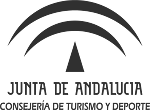Efeito do incremento de carga na resposta eletromiografica e no lactato sangüíneo durante exercício estático
Resumen
Efeito do incremento de carga na resposta eletromiografica e no lactato sangüíneo durante exercício estático
The effect of the increment of loading on the electromyography and blood lactate response during static exercise
Resumen
Objetivo. El objetivo de este estudio fue el de investigar la viabilidad de la identificación del umbral anaeróbico (AT) por medio de las respuestas del lactato sanguíneo (La-) y de la electromiografía (EMG) durante la ejecución de tareas de fuerza isométrica creciente. Método. Veinticuatro hombres saludables (22 ± 2 años) fueron voluntariamente sometidos a la prueba incremental discontinua en equipamiento resistido del tipo Leg Press 45˚. El esquema progresivo de cargas fue de 3% de la carga máxima (1RM) en cada etapa y conducido hasta el agotamiento voluntario, donde la relación esfuerzo-pausa fue de 1:2 minutos (contracción voluntaria isométrica y reposo pasivo). Fueron analizados la raíz media cuadrática (RMS) y la frecuencia media (MDF) del muslo recto femoral y vasto externo bilateral-mente. La determinación del AT por medio del La- y de la EMG fue efectuado por el modelo matemático. Resultados. Los umbrales identificados se quedaron situados entre 13-16% de la 1RM y no hubo diferencias significantes (p > 0,05) en las diferentes situaciones investigadas. Todos los valores individuales estaban dentro de los límites de concordancia conforme a lo evidenciado por la Bland-Altman Plotting. Los valores extremos y outliers contenidos en los residuos no fueron significantes (p > 0,05) y presentaron una distribución normal y homogénea. Conclusión. Los datos sugieren que sí es posible la identificación del AT por medio del La- y del RMS y que hay concordancia entre ellos. Sin embargo, la MDF se ha mostrado inestable para este propósito.
Resumen
Objective. The purpose of this study was to investigate the viability of identifying the anaerobic threshold (AT) by the responses of sanguine lactate (La-) and the electromyography (EMG) during the execution of the task in the increasing isometric strength. Methods. 24 healthy male (22 ± 2 y.o.) were voluntarily induced to an incremental discontinued test in Leg Press 45°. The progressive scheme of charge was of 3% of the maximum charge (1RM) in each step and conduced until voluntary tiredness, where the relation task-pause was of 1:2 minutes (isometric voluntary contraction and passive rest). It has been analyzed the Root Mean Square (RMS) and the Medium Frequency (MDF) of the rectus femoris muscle and the vastus lateralis (vastus externus) bilateraly. The determination of the AT was done by the La- and the EMG determination was done by mathematical modeling. Results. The identified AT were situated between 13-16% of 1RM and there were no significant differences (p > 0.05) between them in each different investigated situation. All of the individual amounts were inside of the limits of agreement according observation on Bland-Altman plotting. The extreme content results and outliers inside the residues were no significant (p > 0.05) and they show a normal and homogeneous distribution. Conclusion. The data suggest that it is possible to identify the AT by the La- and the RMS and that is agreement between them. However the MDF was unstable for this purpose.
Keywords
Resistance exercise, Root mean square, Median frequency, Blood lactate
Publicado
2018-04-30














